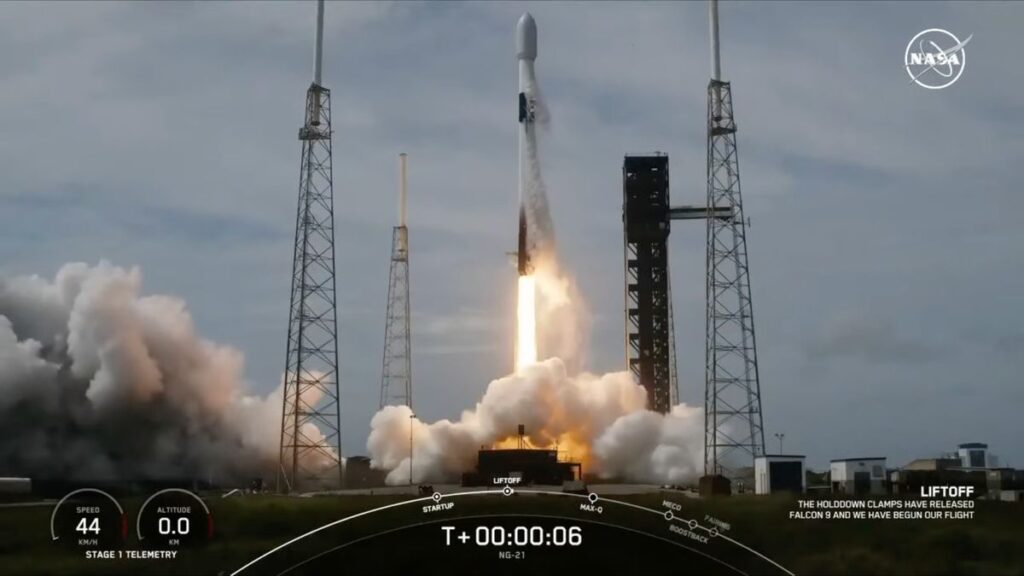SpaceX launched a private cargo spacecraft toward the International Space Station (ISS) today (Aug. 4), on the company’s second liftoff of the day.
A Falcon 9 rocket carrying the Cygnus freighter lifted off from Cape Canaveral Space Force Station in Florida today at 11:02 a.m. EDT (1502 GMT) after a one-day delay caused by bad weather.
About eight minutes after launch, the rocket’s first stage came back for a landing at Cape Canaveral as planned. Then, just under 15 minutes after liftoff, the Cygnus deployed from the Falcon 9’s upper stage into low Earth orbit.
The Cygnus suffered some issues not long after that, however.
“Shortly after launch, the spacecraft missed its first burn slated for 11:44 a.m. [EDT] due to a late entry to burn sequencing,” NASA officials wrote in a postlaunch update this afternoon. “Known as the targeted altitude burn, or TB1, it was rescheduled for 12:34 p.m. [EDT], but aborted the maneuver shortly after the engine ignited due to a slightly low initial pressure state. There is no indication the engine itself has any problem at this time.”
The prelaunch plan called for Cygnus to arrive at the ISS on Tuesday (Aug. 6), a little after 3 a.m. EDT (0700 GMT). That’s still the target, despite the thruster issues, NASA officials wrote in the update.
The current cargo mission is called NG-21, because it’s the 21st Cygnus cargo flight to the ISS.
The Cygnus vehicle that’s flying on NG-21 is called the S.S. Richard “Dick” Scobee, after the NASA astronaut who commanded the ill-fated STS-51-L mission of the space shuttle Challenger. Scobee and his six crewmates died when Challenger exploded shortly after liftoff on Jan. 28, 1986.
The freighter is packed with nearly 8,200 pounds (3,720 kilograms) of supplies on NG-21, including a range of scientific gear. Among the experiments are Rotifer-B2, which will study the effects of spaceflight on DNA repair in the rotifer species Adineta vaga, and MVP Cell-07, which will examine how bioprinted or engineered liver tissue behaves in microgravity.
Two tiny cubesats are hitching a ride to the ISS on NG-21 as well, as part of NASA’s ELaNa (Educational Launch of Nanosatellites) program. The pair will deploy from the ISS after Cygnus gets to the station.
The S.S. Richard “Dick” Scobee is expected to remain docked with the ISS until January 2025, when it will depart to burn up in Earth’s atmosphere.
Russia’s Progress freighter is similarly disposable; the third currently operational ISS cargo craft, SpaceX’s Dragon capsule, is reusable, landing safely in the ocean under parachutes at the end of its missions.
The NG-21 launch was the second let of a SpaceX doubleheader: In the predawn hours today, a Falcon 9 launched 23 of the company’s Starlink internet satellites to orbit from Vandenberg Space Force Base in California.
Source: https://www.space.com/spacex-cygnus-cargo-spacecraft-launch-ng-21



